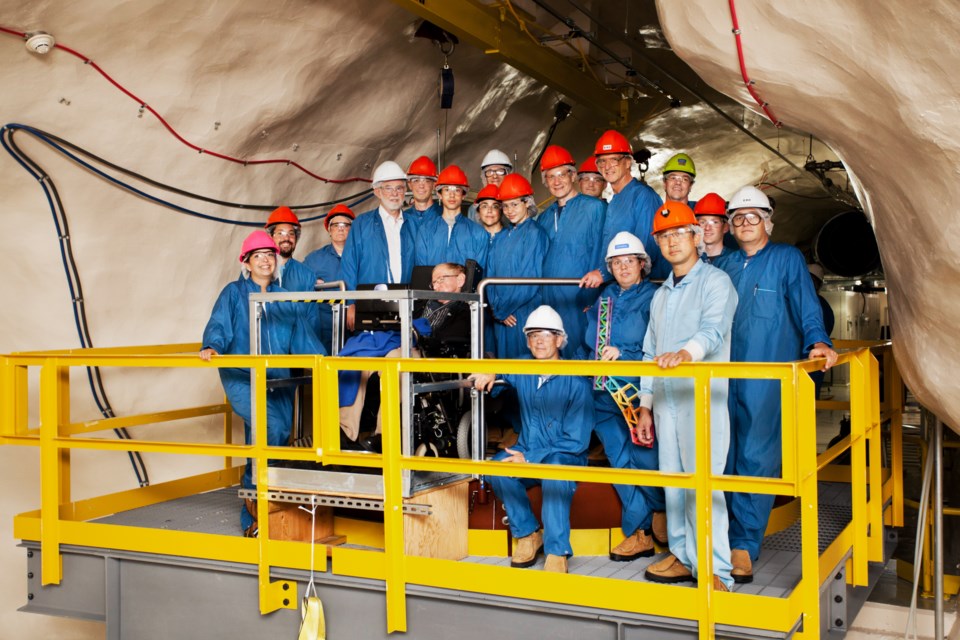The late Stephen Hawking's contributions to science and his equally impressive ability to popularize science will never be forgotten, says Art McDonald, 2015 Nobel Laureate and director of the Sudbury Neutrino Observatory scientific collaboration that evolved into today's SNOLAB.
“My sincere condolences to Stephen Hawking's family on his passing today," McDonald, a professor emeritus at Queen's University, said in a Facebook post today. "I was fortunate to have known Stephen and to have escorted him 2 km underground twice at SNOLAB. His strong interest in science and in understanding how our Universe works was evident in all of our interactions.
"He is an inspiration to the world in his dedication to his work, indomitable spirit and sense of humour in spite of all his medical difficulties. I will always remember him posing questions to our students underground about their work, composed with difficulty on his computer but straight to the point. His strong contributions to science will be remembered along with his unique contributions to the awareness of science among the general public and his inspiration to those with disabilities to let their spirit shine through."
One of those students McDonald referred to was Dr. Richard Ford, who met Hawking at SNOLAB when he was a student and is now director of program development at the underground lab.
"His scientific contributions are huge and lasting," Ford said.
“Then of course is the way he was able to popularize science. He had many TV appearances and how he was really able to get other people excited about science and to understand the importance of it.
“That's probably the big legacy he leaves behind.”
The renowned British physicist passed away March 14 at his home in Cambridge, England at the age of 76.
Known for his work on black holes and the nature of time, Hawking continued with his work despite living with a slow-progressing form of amyotrophic lateral sclerosis (ALS) that gradually paralyzed him.
His 1988 best-seller A Brief History of Time, in which he presented the best scientific ideas on the history, nature and fate of the universe for public consumption, catapulted him into the mainstream and has sold more than 10 million copies.
Even after the loss of his speech, he was still able to communicate through a speech-generating device, initially through use of a hand-held switch, and eventually by using a single cheek muscle.
“That's the other inspirational aspect, is seeing how somebody who had such a debilitating condition was able to do so much with his life and enjoy it,” Ford said.
Hawking visited the underground SNOLAB observatory in Sudbury two times, in 1998 and 2012. Both times, he was transported through Creighton Mine to the observatory using a rail car built for him by Vale.
Ford said he had the privilege of speaking with Hawking on both occasions. During his 1998 visit, Ford was a Queen's University graduate student working on a component of the original SNO detector.
“The first time you interact with Stephen Hawking, you don't really know or quite understand exactly how he's understanding you,” he said.
“But you realize within a minute that he's taking in absolutely everything.
“I described my work, and through his synthesizer voice, he asked a very significant, pertinent question about my work, which obviously showed how he was absorbing everything that was shown and taking it all in.”
Hawking seemed very excited about visiting the observatory, and understood the importance of the research being done there.
Of course, McDonald went on to win the 2015 Nobel Prize in Physics for his work on neutrino research at the Sudbury facility.
“(Hawking) clearly understood the discovery potential of the science that we're doing here,” Ford said.
